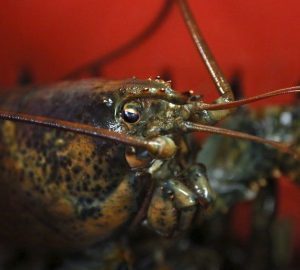Daily Archives: August 2, 2020

Corps of Engineers to complete New White River fish trap, the biggest facility of its kind in North America
At the insistence of tribes and federal fisheries managers, the Army Corps of Engineers will soon complete the biggest facility of its kind in North America, to capture and transport salmon to free flowing stretches of the White River, a tributary of the Puyallup. Big as an aircraft carrier and made of enough concrete to pave a mile and a quarter of Interstate 5, the White River Fish Passage Facility is expected to be completed in October. The $131 million facility includes a complex of gates, chutes, a fish ladder and even a pair of gleaming stainless steel augers pretty as an art piece, custom-made by J. Nelson Enterprises metalworks in Orting. The augers will lift fish into flumes that carry them to trucks for the 12-mile ride from the fish collection facility at Buckley, where they will be released back to the river above Mud Mountain Dam near Enumclaw, to spawn. >click to read< 14:32

North Atlantic Right Whale: Maine Certified Sustainable Lobster Association loses MSC certification despite sustainable management of the Maine lobster fishery
The Maine Certified Sustainable Lobster Association (MCSLA) announced today that its Marine Stewardship Council (MSC) certification will be suspended due to a recent decision in the federal case Center for Biological Diversity v. Ross. The certificate suspension is occurring despite continued sustainable management of the Maine lobster fishery and remains the direct result of NOAA’s 2014 biological opinion on the impact that lobster fishing has on right whales. The MCSLA is anticipating NOAA’s 2020 draft biological opinion, which may be made public as soon as August 2020. Once the 2020 biological opinion is finalized and implemented, the MCSLA will work to quickly regain its MSC certification. >click to read< 11:45

How Coronavirus Has Changed Business for Gloucester Fishermen
Gloucester has been a fishing town since its founding in the early 1620s, and the industry was the backbone of the local economy well into the 20th century. In recent decades, however, the industry has struggled as it grapples with regulations designed to prevent over-fishing and limit environmental damages. Many fishermen with long family histories in the business have had to turn to new professions, and the city’s fishing fleet has declined significantly since its peak. When the COVID-19 pandemic emerged, the situation became even worse. Government mandates and public health recommendations closed the doors of many restaurants, where the vast majority of the seafood consumed in the United States is eaten. In 2017, about 68 percent of the money Americans spent on seafood—some $70 billion—was at restaurants, according to a report from the National Oceanic and Atmospheric Administration. >click to read< 10:11

Tropical Storm Isaias no longer forecast to restrengthen into hurricane, forecasted impacts remain the same
Tropical Storm Isaias is forecast to move northward and skirt the east coast of Florida today. While Isaias is no longer forecast to restrengthen into a hurricane, the impacts will remain essentially the same. Dangerous storm surge of 2 to 4 feet is expected in some coastal areas regardless of whether Isaias makes landfall in Florida. How much heavy rain occurs over eastern Florida will depend on the exact track it takes. Isaias is then forecast to move north toward the Carolinas and potentially make landfall there Monday night, causing high winds. Heavy rainfall totals are expected to cause potentially life-threatening flash flooding over the Carolinas and then the Mid-Atlantic Monday and Tuesday as Isaias moves north, and Moderate Risks of flash flooding are in place. Please see the National Hurricane Center for further and updated information on Isaias. >click to read< 08:31



















































